Pakistan and India share a dubious distinction: the border between the two countries has the lowest level of trade between any two countries of similar size and similar geographic and cultural proximity. This is even more disturbing when you consider the fact that in the first few years after independence, 60% of Pakistan’s total trade was with India, compared to the less than 3% it is today.
Yet in recent months, there have been groundbreaking overtures between the two countries: Pakistan finally granted most-favoured nation status to India. That makes it sound like we just declared India to be our best buddy (which is why the Difa-e-Pakistan Council crowd freaked out), but what it really just means is that we promise not to discriminate against India as compared to our other trading partners.
So what does this mean for Pakistan? Will it affect the average Pakistani? As it turns out, the answer is a resounding yes. Everyone, from the chai-wala and the thela-wala to the textile exporter and the industrial tycoon, will see their lives change, and mostly for the better.
For starters, those labourers at Wagah will hopefully get a break soon. The reason they are needed is because India only allows Pakistani cement to cross the border on a train, not on trucks — a distinction that makes no sense to virtually anyone who wants to buy and sell the commodity. As the two countries negotiate a more liberal trade regime, such rules are likely to go away, making it easier for both sides to trade.
Last year, Pakistan exported over 750,000 tonnes of cement to India, a number that can easily go higher. But the areas of cooperation between the countries go far beyond just cement.
Cheaper food
The most important consequence for the average Pakistani consumer is likely to be cheaper food, since they will have access to vegetables and grains from both sides of the border. With its ‘Green Revolution’, India has managed to grow fruits and vegetables in such massive quantities that products grown in Indian Punjab will be cheaper in the Pakistani market than the local product.
And it is not just that they have more farmland. The Indians are more efficient too. In wheat, for instance, the average Indian farm yields 2.1 tonnes per acre, 50% higher than Pakistan’s 1.4 tonnes per acre, according to Ibrahim Mughal, chairman of the Pakistan Agri Forum, a farmers’ group. Palak Paneer will thus be cheaper, even if the Palak isn’t Pakistani.
One area of cooperation where Pakistanis are also likely to benefit from open trade is tea. Pakistan is one of the largest consumers of tea in the world, but currently imports almost 70% of its total consumption from Kenya — nearly 2,700 miles away — even though the world’s largest producer is right next door, from whom we only buy 15% of our tea. As trade with India liberalises over time, that number is expected to grow.
Not surprisingly, Pakistani farmers are afraid of the competition. “If open trade with India is allowed, Pakistan’s agriculture sector will start dying,” says Mughal.
Yet the barter trade between the two countries — which is valued at Rs10 million per week — offers a preview of each country’s comparative advantage and suggests otherwise. India sells potatoes, onions, bananas, chillies, cardamoms, corianders, and tamarind while Pakistan sells dry fruits, herbs and oranges, along with Peshawari sandals and embroidered items.
“Of all fruits and vegetables, Pakistan’s only superior product is the orange. It is the only Pakistani fruit that can build a brand on the other side of the border,” says Mughal.
Another expert, however, disagreed and suggested that Pakistani mangoes might also find a niche in the Indian market. “India’s mango season lasts from March to June while Pakistan’s begins in June and ends in October,” said Tariq Puri, the former head of the Trade Development Authority of Pakistan. An extended mango season alone is enough reason to support free trade between the two countries.
Lawn fever: coming soon to India
In April this year, more than 600 Pakistani consumer goods brands held an exhibition in Delhi, called Lifestyle Pakistan. Manufacturing houses such as Gul Ahmed, Ahad Home Signature, Chen One, Zamana, Bareeze and Hub Leather were a few of the big names displaying their products. And if you thought the ladies in Lahore go nuts over designer lawn, you should have seen the crowd at Delhi.
Every single lawn exhibitor reported strong sales, according to Daily Express reporter Kashif Hussain who was covering the event. Al Karam Textiles ran out of their stock in the first two days of the four-day exhibition, one of the many exhibitors who grossly underestimated the demand in India for their product.
“We are in love with Pakistani lawn,” said one Indian buyer, who was holding bags that appeared to weigh more than the children who stood beside her with a disgruntled look on their faces. “Gul Ahmed and Al Karam are a few of the products that already make their way to India through Dubai.”
Pakistani lawn sells at nearly twice the price in India than it does in Pakistan, one of the reasons that Shobhaa De made it a point to go Lawn shopping while attending the Karachi Literature Festival this February. While at least part of that higher price tag is justified by transportation costs, most of it just translates into higher margins for Pakistani manufacturers. India’s fashion industry does not appear to focus nearly as much on lawn, leaving an open opportunity for Pakistani companies.
“We have offers from retail stores in India for our product,” said Al Karam Textiles Director Abid Umer. Al Karam is also open to the idea of opening up its own branches, which it now can since New Delhi legalised investment by Pakistani companies into India in August.
Al Karam is not the only one. Other textile giants are all set to start joint ventures and open branches across the border. Lahore-based company Sefam is also keen to roll out its popular brand Bareeze in India. “We want to be [in India] like all other international brands. We are scouting for franchise partners who will help us establish the brand in the Indian market,” Sefam International business head Zain Aziz told Indian newspaper Business Line.
Planning for the Indian market appears to be easy for Pakistani companies. “Delhi and Lahore have similar taste while Karachi and Mumbai [consumers] are on the same lines,” said Umer.
Automobiles: two-way traffic
Perhaps the most exciting avenue of cooperation between the two countries is automobile manufacturing, where both sides have different comparative advantages and the most likely scenario is an integrated supply chain where companies on both sides of the border use suppliers in either country. This would make the auto sector in South Asia similar to the one in North America (USA, Canada and Mexico), creating a permanent constituency for peace.
One automobile company that is particularly excited about the possibility of liberalised trade with India is Atlas Honda. The company is on track to produce 650,000 motorcycles in 2012, but is already investing more than $50 million to expand its capacity, which it hopes to eventually take to two million units, largely on the back of anticipated demand from India. That expansion is expected to result in tens of thousands of jobs being created in Pakistan.
The company’s major advantage seems to be the 70 cc motorcycle. Atlas Honda is the only partner of Honda that manufactures the CD-70 model, a highly popular one in places like Afghanistan, particularly due to pricing. Atlas’ Indian competitors tend to focus on the 100 cc model.
“The Indian 70 cc motorcycle costs about Rs70,000. Ours is about Rs66,000,” said Raziur Rehman, the company’s general manager for corporate affairs.
In addition, Atlas Honda — along with other car manufacturers — will have the opportunity to import cheaper parts for their products from India, knocking down their prices even further.
And in some cases, Pakistani automobile manufacturers have no choice but to import parts from India. Pak Suzuki has currently halted production of the Alto, one of its best selling products, after the government enacted Euro II emissions standards. Pak Suzuki Motor Company’s Japanese parent company moved the production of Euro II compliant parts for the Suzuki Alto (one of the best selling smaller cars in Pakistan) from Japan to India. Owing to current legal restrictions on trade between India and Pakistan, Pak Suzuki was forced to discontinue making the Alto and is desperate for trade between the two countries to open up so that it can sell its signature vehicle again.
Powering Pakistan with Indian energy
India has offered Pakistan all the petroleum products supply it needs and also 5,000MW of electricity to help it end the energy crunch that has resulted in hundreds of factories shutting down, thousands of workers being laid off and recurring power riots. The offers are tempting but Pakistan is wary of creating an energy dependence on the country it has fought three wars with over the last six decades.
Thus far, Pakistan has decided to import up to 500 megawatts — only 10% of the total offered — of electricity from India with the World Bank agreeing to fund construction of the required infrastructure.
Bathinda Refinery, located at the border and just 175km away from Lahore, has offered to move surplus diesel from India to Pakistan. The $4 billion project is a joint venture of state-owned Hindustan Petroleum Corporation Ltd and Mittal Energy, owned by steel magnate Lakshmi Mittal.
Pakistan also needs furnace oil and diesel, which the Indian refinery could provide. But observers in the industry are not optimistic. “Nothing is happening anytime soon,” said Sohail Khattak, CEO of the Attock Group, the only integrated energy conglomerate in Pakistan. “There have been a lot of meetings and many more are expected before any actual trade happens.”
Time to open up
Trade liberalisation between India and Pakistan needs to happen. Trade between the two countries is currently only $2.7 billion, and tilted heavily towards India. By liberalising more on its end, Pakistan strengthens its hand in negotiating with New Delhi to open up the much larger Indian market, allowing Pakistani companies to grow and millions of Pakistani families the opportunity to lead a better life through well-paying jobs in export-oriented sectors.
Most experts agree that Pakistan-India trade should be at least $16 billion, if not higher. About $10 billion of that is estimated to be the amount of trade between the two countries that already takes place, but through other countries, such as the UAE or Singapore.
Both sides have made some progress. Pakistan granted India MFN status and India allowed investment from Pakistani companies, allowing them to set up subsidiaries to begin selling their products. But a lot more needs to happen.
The more trade there is between the two countries, the more trust there will be as well. For every Pakistani who works in a company that sells to India, there will be at least a dozen who will no longer view India as a national security threat. And the more Indian consumers who buy Pakistani products, the fewer there will be who view Ajmal Kasab as Pakistan’s primary export. All of this will make it harder for the two countries to go to war or fall prey to their respective jingoists. Now isn’t that something to aspire to?
Published in The Express Tribune, Sunday Magazine, September 23rd, 2012.
Like Express Tribune Magazine on Facebook and follow at @ETribuneMag
COMMENTS (3)
Comments are moderated and generally will be posted if they are on-topic and not abusive.
For more information, please see our Comments FAQ
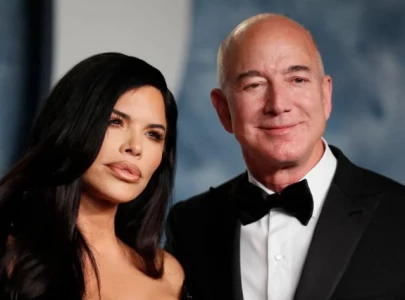




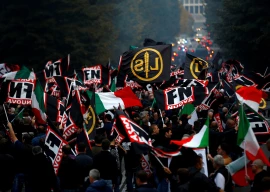


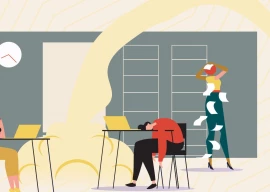

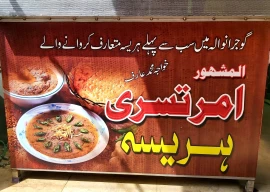
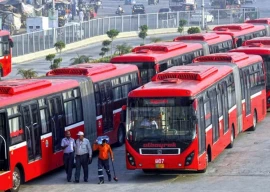
1725083820-0/Untitled-design-(24)1725083820-0-270x192.webp)
1725096749-0/Untitled-design-(1)1725096749-0-270x192.webp)
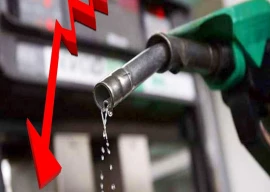

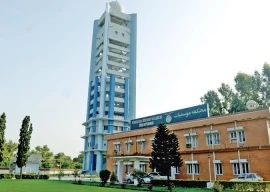






For once, I agree. Trade is the best way for both countries to improve ties while improving their standards of living and controlling inflation.
As tempting as it sounds reality is totally different and you should have done proper home work before posting this article!
Day Dreaming................